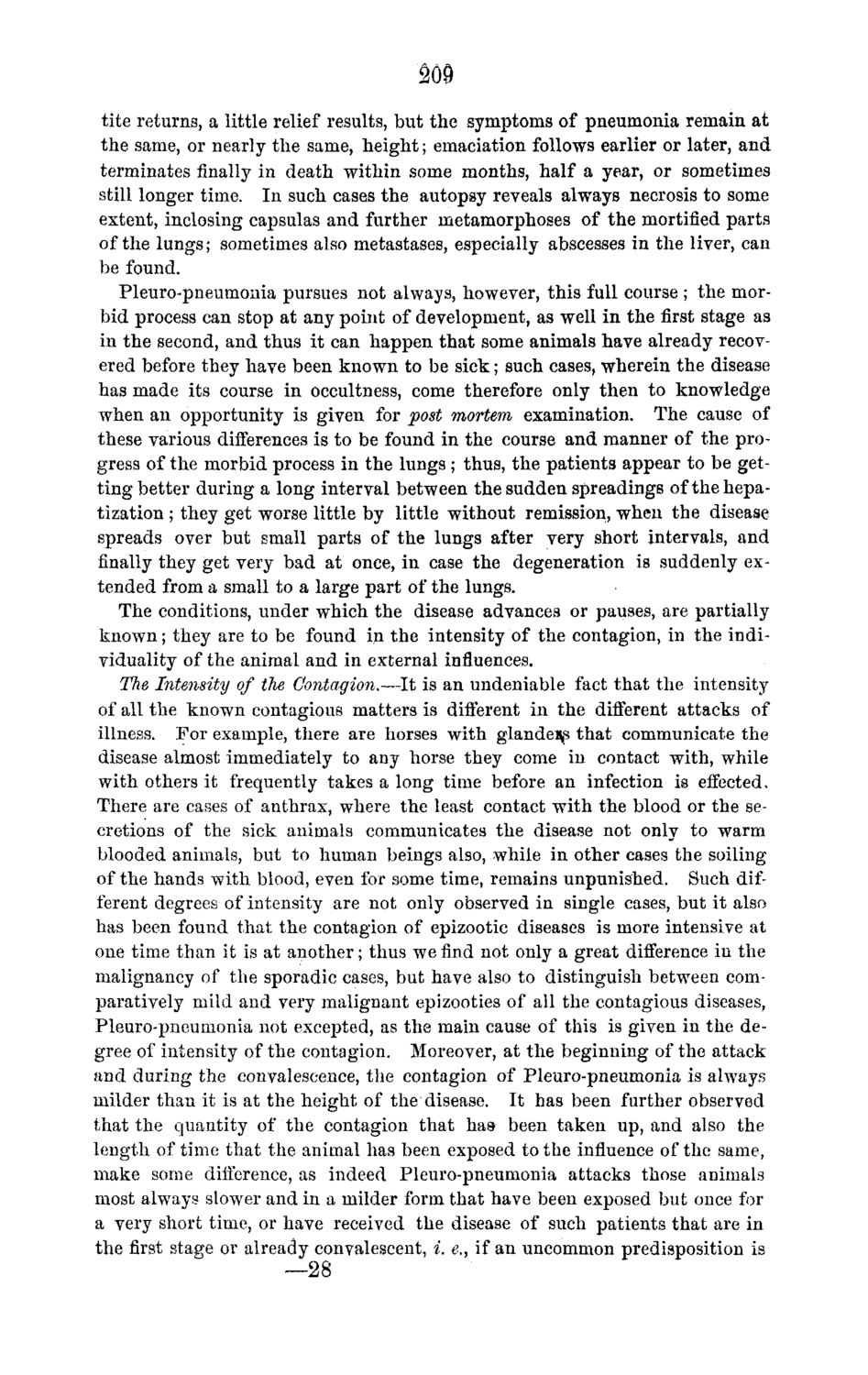| |
| |
Caption: Board of Trustees Minutes - 1870
This is a reduced-resolution page image for fast online browsing.

EXTRACTED TEXT FROM PAGE:
m tite returns, a little relief results, but the symptoms of pneumonia remain at the same, or nearly the same, height; emaciation follows earlier or later, and terminates finally in death within some months, half a year, or sometimes still longer time. In such cases the autopsy reveals always necrosis to some extent, inclosing capsulas and further metamorphoses of the mortified parts of the lungs; sometimes also metastases, especially abscesses in the liver, can be found. Pleuro-pneumonia pursues not always, however, this full course ; the morbid process can stop at any point of development, as well in the first stage as in the second, and thus it can happen that some animals have already recovered before they have been known to be sick; such cases, wherein the disease has made its course in occultness, come therefore only then to knowledge when an opportunity is given for post mortem examination. The cause of these various differences is to be found in the course and manner of the progress of the morbid process in the lungs; thus, the patients appear to be getting better during a long interval between the sudden spreadings of the hepatization ; they get worse little by little without remission, when the disease spreads over but small parts of the lungs after very short intervals, and finally they get very bad at once, in case the degeneration is suddenly extended from a small to a large part of the lungs. The conditions, under which the disease advances or pauses, are partially known; they are to be found in the intensity of the contagion, in the individuality of the animal and in external influences. The Intensity of the Contagion.—It is an undeniable fact that the intensity of all the known contagious matters is different in the different attacks of illness. For example, there are horses with glande^ that communicate the disease almost immediately to any horse they come in contact with, while with others it frequently takes a long time before an infection is effected. There are cases of anthrax, where the least contact with the blood or the secretions of the sick animals communicates the disease not only to warm blooded animals, but to human beings also, while in other cases the soiling of the hands with blood, even for some time, remains unpunished. Such different degrees of intensity are not only observed in single cases, but it also has been found that the contagion of epizootic diseases is more intensive at one time than it is at another; thus we find not only a great difference in the malignancy of the sporadic cases, but have also to distinguish between comparatively mild and very malignant epizooties of all the contagious diseases, Pleuro-pneumonia not excepted, as the main cause of this is given in the degree of intensity of the contagion. Moreover, at the beginning of the attack and during the convalescence, the contagion of Pleuro-pneumonia is always milder than it is at the height of the disease. It has been further observed that the quantity of the contagion that has been taken up, and also the length of time that the animal has been exposed to the influence of the same, make some difference, as indeed Pleuro-pneumonia attacks those animals most always slower and in a milder form that have been exposed but once for a very short time, or have received the disease of such patients that are in the first stage or already convalescent, i. e., if an uncommon predisposition is —28
| |